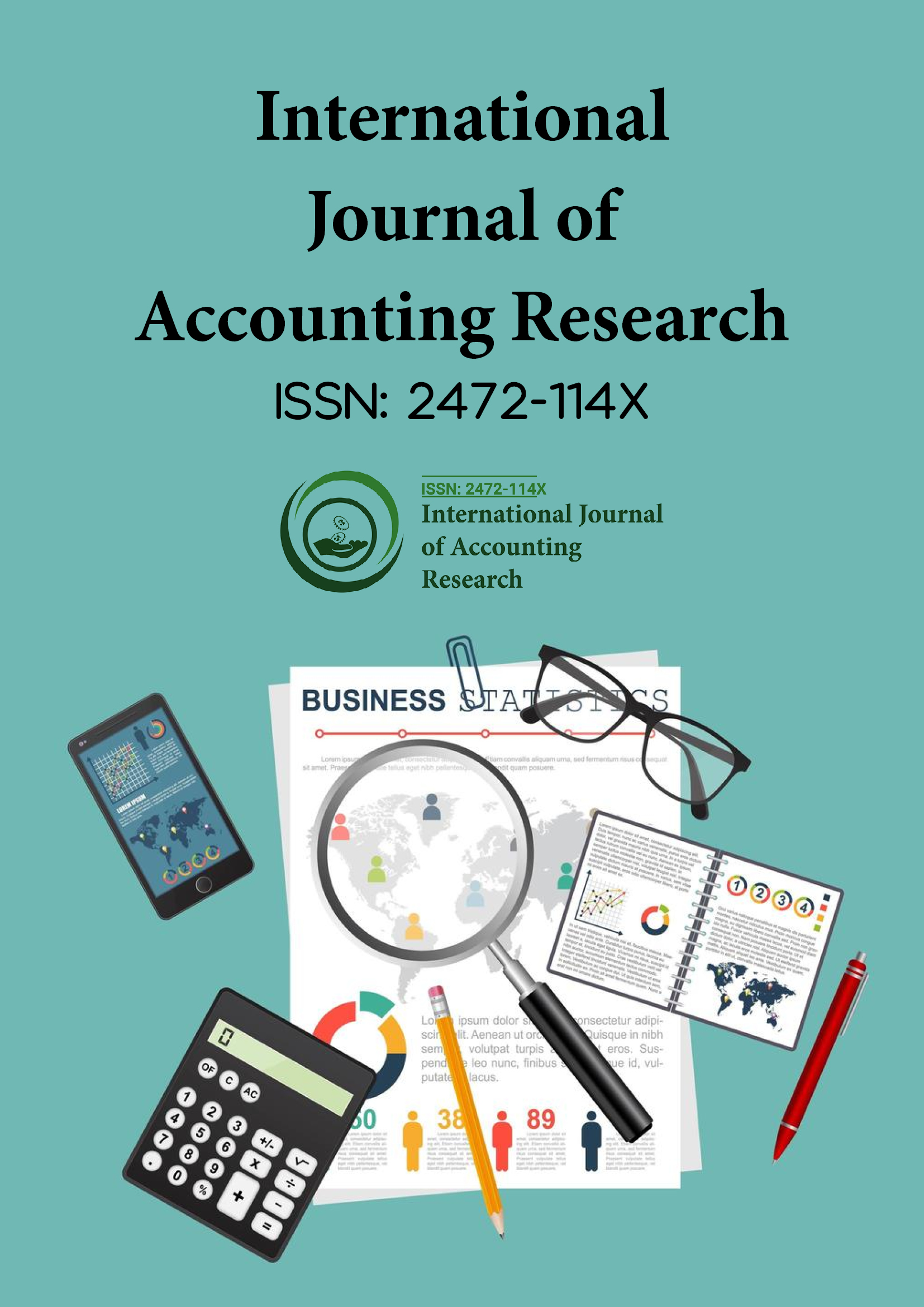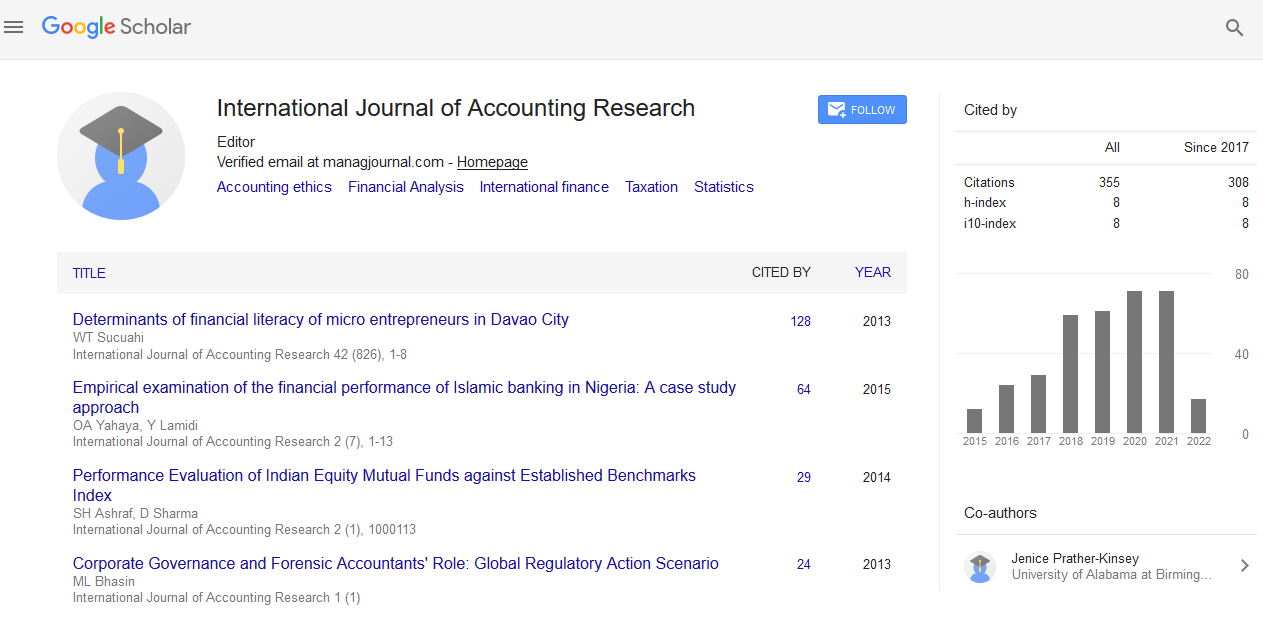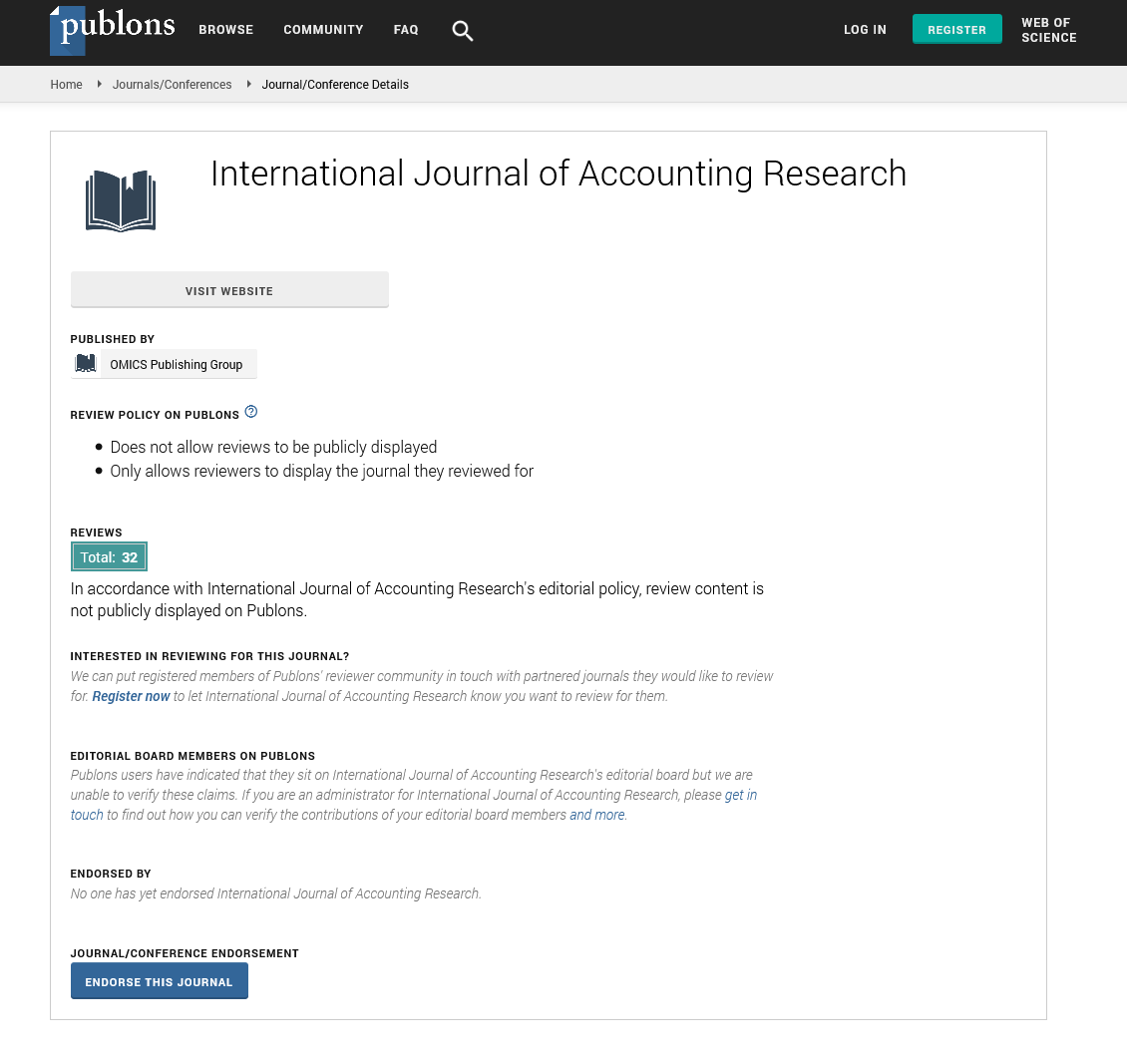Indexed In
- Open J Gate
- RefSeek
- Hamdard University
- EBSCO A-Z
- Scholarsteer
- Publons
- Euro Pub
- Google Scholar
Useful Links
Share This Page
Journal Flyer

Open Access Journals
- Agri and Aquaculture
- Biochemistry
- Bioinformatics & Systems Biology
- Business & Management
- Chemistry
- Clinical Sciences
- Engineering
- Food & Nutrition
- General Science
- Genetics & Molecular Biology
- Immunology & Microbiology
- Medical Sciences
- Neuroscience & Psychology
- Nursing & Health Care
- Pharmaceutical Sciences
Opinion Article - (2024) Volume 12, Issue 2
Understanding Stability's Role in Current Account Dynamics
Abal Noorij*Received: 03-Jun-2024, Manuscript No. IJAR-24-26331; Editor assigned: 05-Jun-2024, Pre QC No. IJAR-24-26331 (PQ); Reviewed: 20-Jun-2024, QC No. IJAR-24-26331; Revised: 26-Jun-2024, Manuscript No. IJAR-24-26331 (R); Published: 05-Jul-2024, DOI: 10.35248/2472-114X.24.12.384
Description
Policymakers and economists must understand how macroeconomic stability influences current account dynamics. Macroeconomic stability, which includes growth rates, inflation, financial balance, and debt levels, has a substantial impact on current account balances. A stable macroeconomic climate promotes foreign direct investment, improves trade balances, and supports long-term economic growth. In contrast, instability caused by high inflation, massive deficits, and excessive debt can result in current account deficits and increased economic fragility. By evaluating these stability criteria, the study hopes to provide insights into how macroeconomic stability influences current account balances, guiding successful economic policies, and supporting long-term financial health.
The impact of macroeconomic stability on current account balances has not been studied using a calculated measure. For the first time in the study, it seeks to understand the influence of macroeconomic stability in current account balances. Macroeconomic stability is reflected by an index that includes all countries' affectation rate, growth rate, severance rate, and financial balance data. Macroeconomic stability is a primary determinant of current account balances, coupled with institutional quality and fiscal development.
Macroeconomic stability is defined as the balance of key profitability drivers. There is no clear distinction between stability and insecurity. Macroeconomic stability is determined by assessing various combinations of important profitability characteristics such as growth rate, affectation rate, financial balance, severance, debt position, and current account poverty. Large current account deficits financed by short-term borrowing, a high severance rate, a high position of adding public debt, two integers adding affectation rates, and negative or declining GDP growth rates demonstrate a country's position of macroeconomic instability quite fluently.
Similarly, macroeconomic stability is shown by a positive financial balance, a current account balance with decreasing debt levels, a declining affectation rate in one number, and a growing growth rate. Furthermore, empirical studies reveal a positive relationship between macroeconomic stability and Foreign Direct Investment (FDI) inflows.
Macroeconomic stabilization is an important issue for policymakers in all countries, regardless of level of development. Although the measures used to assess macroeconomic stability varied, it improves countries' ability to help and absorb diverse external and internal shocks, as well as the power of husbandry to minimize negative goods. Macroeconomic stabilization is thus evaluated in a variety of ways, depending on the purpose of the analysis and the outcome of the government's profitable activities. These indications should not be considered separately because they are highly interconnected. For example, high foreign debt does not always imply bad macroeconomic stability if it is used for investment purposes, which boosts growth rates.
For the first time in the study, it seeks to understand the influence of macroeconomic stability in current account balances. Macroeconomic stability is reflected by an index that includes all countries' affectation rates, growth rates, severance rates, and financial balance statistics. The analysis takes into account seven macroeconomic aspects. The factors include growth rate, terms of trade, real effective exchange rate, trade openness, net crude canvas imports, financial balance, and relative income. The analysis includes only one fiscal variable: Total private credit by fiscal sector. Beginning in 1980, macroeconomic and fiscal aspects are included in the study.
The role of macroeconomic stability in current account balances is investigated using a panel data analysis system. They are not simply interested in the short-term factors influencing current account balances. To provide a complete picture, they include short-term key variables like growth rate and real effective exchange rate.
The impact of macroeconomic stability on current account balances has not been studied using a calculated metric. For the first time in the study, the purpose is to determine the impact of macroeconomic stability on current account balances. The study's primary purpose is to better understand the impact of macroeconomic stability on current account balances. The macroeconomic stability indicator is established and calculated collectively for each country. For the first time, the study includes macroeconomic stability as measured by a new metric.
Citation: Noorij A (2024) Understanding Stability's Role in Current Account Dynamics. Int J Account Res. 12:384.
Copyright: © 2024 Noorij A. This is an open-access article distributed under the terms of the Creative Commons Attribution License, which permits unrestricted use, distribution, and reproduction in any medium, provided the original author and source are credited.


